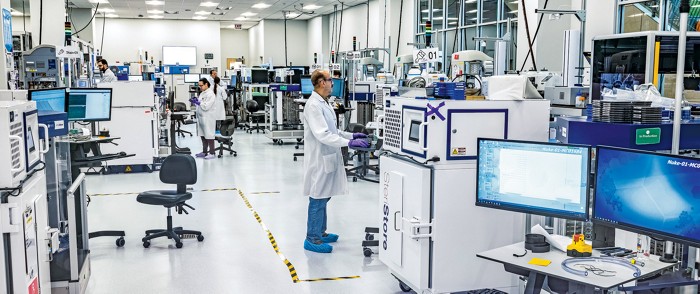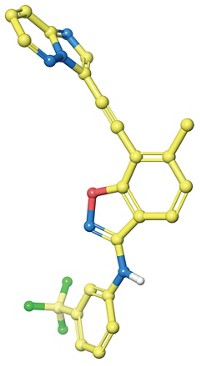Advertisement
Grab your lab coat. Let's get started
Welcome!
Welcome!
Create an account below to get 6 C&EN articles per month, receive newsletters and more - all free.
It seems this is your first time logging in online. Please enter the following information to continue.
As an ACS member you automatically get access to this site. All we need is few more details to create your reading experience.
Not you? Sign in with a different account.
Not you? Sign in with a different account.
ERROR 1
ERROR 1
ERROR 2
ERROR 2
ERROR 2
ERROR 2
ERROR 2
Password and Confirm password must match.
If you have an ACS member number, please enter it here so we can link this account to your membership. (optional)
ERROR 2
ACS values your privacy. By submitting your information, you are gaining access to C&EN and subscribing to our weekly newsletter. We use the information you provide to make your reading experience better, and we will never sell your data to third party members.
Informatics
The rise of subscription-based AI platforms for drug discovery
Claiming a democratization of the field, companies are increasingly offering AI-based services to a wider audience
by Aayushi Pratap
March 25, 2024

As soon as pharmaceutical companies recognized the potential of artificial intelligence tools for drug discovery, they rushed in with big money. After all, traditional drug discovery methods are painstakingly time-consuming, and the promise of AI platforms to trim timelines holds much appeal. Nearly all pharma giants have partnered with start-ups or well-established companies at the forefront of drug discovery AI.
The catch is that these platforms are often out of the financial reach of smaller biotech companies and research groups. But this is changing, thanks to software as a service (SaaS).
SaaS allows users to access cloud-based services over the internet by paying a monthly subscription fee. For a modest sum, drug hunters get access to AI methods of discovering new molecules, though without the personalized service that comes with a full-fledged partnership.
Many AI companies in the drug discovery space have begun to market their services through a suite of business models, including SaaS, that complement their more expensive partnership offerings.
A new player in SaaS for drug discovery AI is the big chipmaker Nvidia, which is best known for producing graphics processing units (GPUs) that enable AI platforms like ChatGPT. Nvidia announced on March 18 that Nvidia Inference Microservices (NIM), a collection of microservices that include models for generative AI for drug discovery processes, will be available as a part of its AI suite.
The company’s AI enterprise is priced at $4,500 per GPU per year or $1.00 per GPU per hour.
“If you are a researcher with access to a supercomputer, you can take NIM and deploy it on your supercomputer. To me, this democratizes access to these platforms,” Kimberly Powell, vice president of health care at Nvidia, said at a press briefing.
Some smaller players have also decided to offer services through SaaS. One of them is Boston-based 1910 Genetics, which uses its AI platform to develop its own drugs for neurological and autoimmune diseases and cancer. It recently enhanced its computing abilities by forming a partnership that gives it access to Microsoft’s high-performance Azure Quantum Elements platform.
In tandem with the partnership, 1910 Genetics has expanded how it offers its drug discovery services. While it will continue collaborating with bigger drug companies to codiscover and engineer drugs, its AI platform will also be available via SaaS. Researchers or small biotech ventures can now try to discover small- and large-molecule medicines directly on the 1910 Genetics platform.
“The aim is to democratize access to core modules within our platform,” says Jen Nwankwo, founder and CEO of 1910 Genetics.
The company also offers an Amazon Prime–like option: researchers working on specific drug targets can inform Nwankwo’s team about the nature of the drug they wish to test, and 1910 Genetics will design a molecule and ship it back.
Elise de Reus, cofounder of the Dutch firm Cradle, whose generative AI platform helps scientists design and engineer proteins, says not all research teams can create their own AI models or have enough data to train them. For such teams, SaaS-based AI platforms are ideal. “SaaS-based platforms can ensure that even smaller start-ups can now access state-of-the-art machine learning tools,” de Reus says. While Cradle has partnerships with Johnson & Johnson, Novonesis, and Grifols, it also offers its platform via SaaS.
The problem of “access” has long plagued the biotech community, says Brent Stockwell, a professor in Columbia University’s Departments of Biological Sciences and Chemistry. “Access was a problem even with DNA-encoded libraries,” he says, referring to DEL, a technology used to discover small-molecule drugs. “Then WuXi [AppTec] started their DELopen platform, which opened DEL screening to small academic labs.” The situation is similar with AI platforms, he adds.
David Spiegel, a professor in Yale University’s Chemistry Department, says almost every new technology is expensive at first, and AI is no exception. He adds that SaaS platforms for drug discovery will benefit smaller research groups like his own.
But not every company building AI platforms for drug discovery wants to go the SaaS route. Atomic AI, a Stanford University spin-off that is building an AI platform to find RNA-based drug targets, will not have SaaS offerings, says founder Raphael Townshend. He says partnering with Big Pharma companies or developing molecules in-house increases the odds of a drug getting approved.
“I think there is a lot of potential for these sort of more SaaS-based businesses at this point,” Townshend says. “But so far, most successful groups have taken more of this partnering approach.”
While SaaS brings AI companies revenues from monthly or annual subscription fees, partnering with Big Pharma companies often means getting a huge chunk of investment in one go.
One reason AI companies prefer the latter arrangement is that it’s expensive to generate data to better their AI models. Data in the world of biology and chemistry is generally proprietary or nonexistent. “The number of data points we have in the drug discovery space is laughably small,” says Garegin Papoian, cofounder of Deep Origin, a California-based start-up building a computational R&D platform for drug discovery researchers.
Recursion Pharmaceuticals, for instance, has an automated laboratory that runs weekly experiments in 2 million wells on microplates to generate hundreds of gigabytes of data. “This data is proprietary because it is typically expensive to generate,” says Imran Haque, senior vice president of AI and digital sciences at Recursion.
Recursion is developing drugs for rare diseases such as cerebral cavernous malformation, in which blood vessels become leaky. It has also partnered with Bayer, Roche, and Genentech to discover drugs for neurological and oncology indications. It currently has no SaaS offerings.
As AI companies test these various revenue models, it remains to be seen how many smaller research groups adopt them. “For many researchers, AI platforms are unfamiliar territories,” Yale’s Spiegel says.
CORRECTION:
This story was updated on March 27, 2024, to correct two company names. The Dutch protein design and engineering firm is Cradle, not Cradle Bio. And Novozymes is now called Novonesis.
This story was updated on April 3, 2024, to correct its description of how researchers can use the 1910 Genetics software as a service platform. They can use it to discover both small- and large-molecule medicines, not just large-molecule medicines.




Join the conversation
Contact the reporter
Submit a Letter to the Editor for publication
Engage with us on Twitter